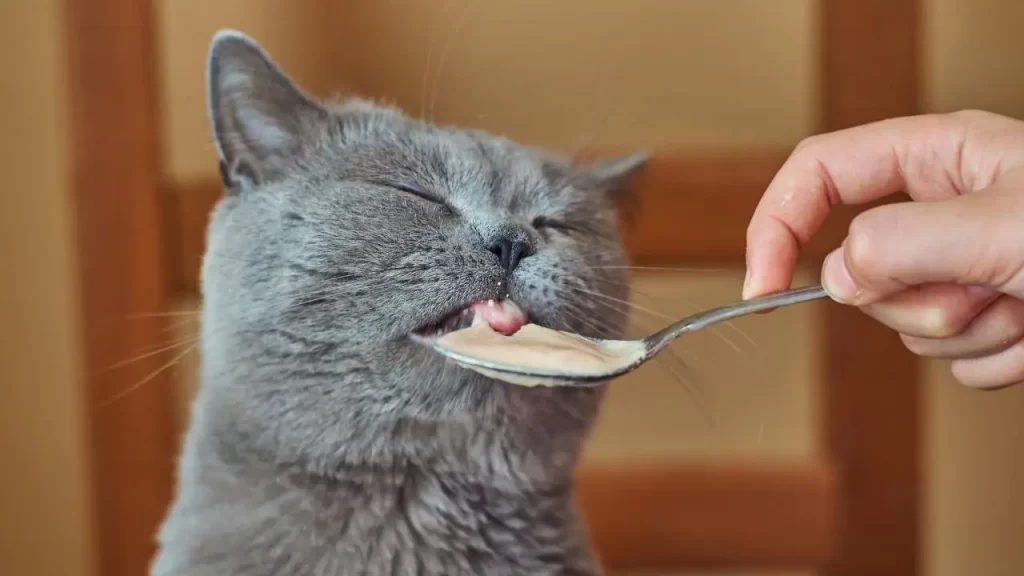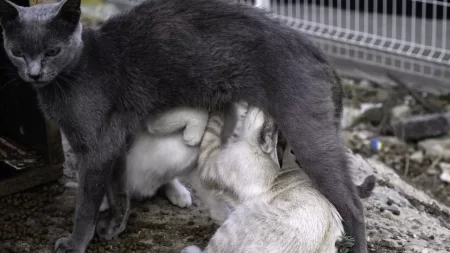Cats are part of the family, so you may wonder what human foods they can eat safely. While cats need a high-protein diet that is mainly based on meat, they can also enjoy some fruits, vegetables, dairy products, and eggs as occasional treats.
However, not all human foods are safe for cats, and some can even be toxic or deadly.
In this article, we will explore what human foods are safe for cats, how to introduce them to your cat’s diet, and how to ensure a balanced diet for your cat.
Safe Human Foods for Cats
The following human foods are safe to offer your cat on occasion and in small quantities:
Meat and Poultry
Meat and poultry are excellent sources of protein, iron, and other nutrients for cats. They also provide taurine, an essential amino acid that cats cannot produce on their own. Cooked, lean meats such as beef, chicken, turkey, liver, and lamb are all ok for your cat to eat. However, make sure the meat is cooked thoroughly and remove all skin and bones before feeding your cat. Do not give your cat raw meat, as it can carry parasites and bacteria that can cause serious illness.
Fish
Fish is another good source of protein and omega-3 fatty acids for cats. However, fish should not be the main part of your cat’s diet, as it can cause nutritional imbalances and health problems if fed too often. Tuna, for example, can cause inflammation of the body’s fat (steatitis) and vitamin E deficiency if fed regularly. Fish also contains mercury and other contaminants that can accumulate in your cat’s body over time. Therefore, fish should be given as an occasional treat and in small amounts. Choose canned or cooked fish that is low in salt and mercury, such as salmon or sardines. Avoid fish bones, as they can choke or injure your cat.
Eggs
Eggs are another protein-rich food that cats can eat safely. They also contain biotin, a vitamin that helps with skin and coat health. However, eggs should be cooked well before giving them to your cat, as raw eggs can contain salmonella or other harmful bacteria. You can offer your cat scrambled or boiled eggs as a treat once in a while.
Fruits and Vegetables
Fruits and vegetables are not essential for cats, but they can provide some vitamins, antioxidants, and fiber for your cat’s health. Some fruits and vegetables that cats can eat include:
- Watermelon: This juicy fruit is safe for cats to eat in moderation. It contains water, vitamin C, and lycopene. Make sure to remove the seeds and rind before giving it to your cat.
- Apples: Apples are also safe for cats to eat in small amounts. They contain vitamin C, fiber, and phytochemicals. Remove the seeds and core before offering it to your cat.
- Bananas: Bananas are rich in potassium, vitamin B6, and fiber. They can be given to cats as a treat occasionally.
- Blueberries: Blueberries are high in antioxidants and vitamin C. They can help with urinary tract health and immune system function.
- Cantaloupe: Cantaloupe is another melon that cats can enjoy. It contains vitamin A, vitamin C, beta-carotene, and water.
- Carrots: Carrots are good sources of vitamin A, beta-carotene, fiber, and potassium. They can help with vision and dental health. Cook them well and chop them into small pieces before giving them to your cat.
- Green beans: Green beans are low in calories and high in fiber, protein, and vitamins. They can help with weight management and digestion.
- Peas: Peas are also low in calories and high in fiber, protein, and vitamins. They are often used as a protein source in commercial cat foods.
- Broccoli: Broccoli is a cruciferous vegetable that contains antioxidants, vitamin C, and fiber. It can help with detoxification and immune system support. Steam it and cool it before giving it to your cat.
- Zucchini: Zucchini is a squash that is low in calories and high in water, vitamin C, and fiber. It can help with hydration and digestion.
Dairy Products
Dairy products such as milk, cheese, yogurt, and butter are often considered treats for cats. However, many cats are lactose intolerant, meaning they cannot digest the sugar (lactose) in dairy products properly. This can cause diarrhea, vomiting, gas, and bloating in cats. Some cats may tolerate small amounts of dairy products better than others, but it is best to avoid them or use lactose-free alternatives. If you want to give your cat some dairy products, choose low-fat and low-salt options and offer them sparingly.
Tips for Introducing Human Foods to Cats
If you want to introduce some human foods to your cat’s diet, here are some tips to follow:
- Start with small amounts: Give your cat only a bite or two of the new food at first, and monitor their reaction. If they show any signs of a digestive upset or allergic reaction, such as vomiting, diarrhea, itching, or swelling, stop giving them the food and consult your veterinarian.
- Introduce one food at a time: Do not give your cat multiple new foods at once, as this can make it hard to identify which food caused a problem. Wait at least a few days between introducing new foods to your cat.
- Watch for any adverse reactions: Some foods may not cause immediate symptoms but may affect your cat’s health over time. For example, fish can cause mercury poisoning or vitamin E deficiency if fed too often. Keep an eye on your cat’s behavior, appetite, weight, coat condition, and litter box habits. If you notice any changes or abnormalities, contact your veterinarian.
- Consult with a veterinarian: Before giving your cat any human foods, especially if they have any known health conditions or dietary restrictions, talk to your veterinarian. They can advise you on what foods are safe or unsafe for your cat, how much and how often to give them, and what signs to watch out for.
Conclusion
Human foods can be a fun and healthy way to treat your cat and bond with them. However, not all human foods are safe for cats, and some can even be toxic or deadly.
Therefore, it is important to know what human foods are safe for cats, how to introduce them to your cat’s diet, and how to ensure a balanced diet for your cat. Always consult your veterinarian before giving your cat any human foods, especially if they have any known health conditions or dietary restrictions.
Remember to give human foods only as occasional treats and in small quantities, and always monitor your cat’s reaction and health. By following these tips, you can enjoy sharing some human foods with your cat safely and responsibly.







